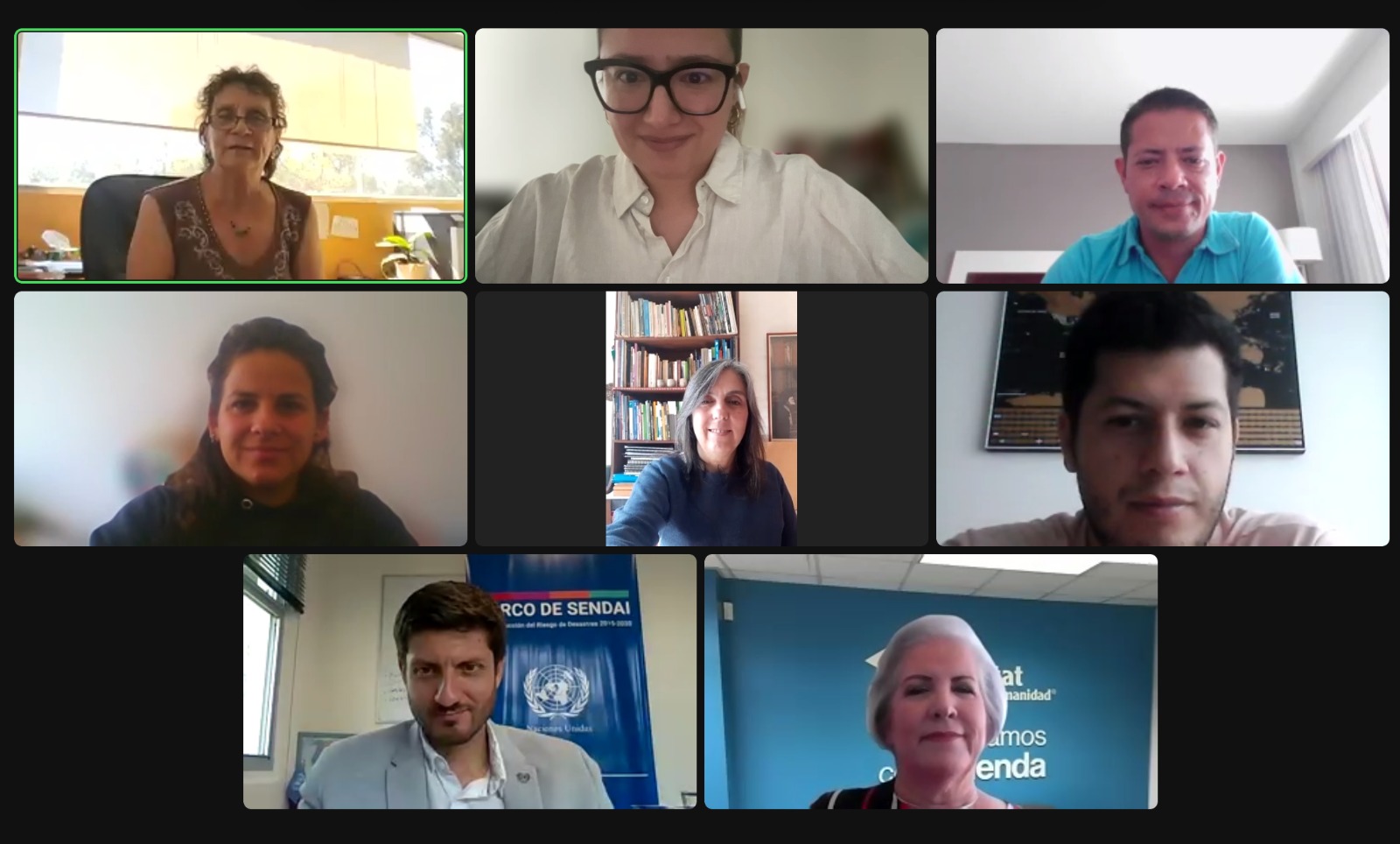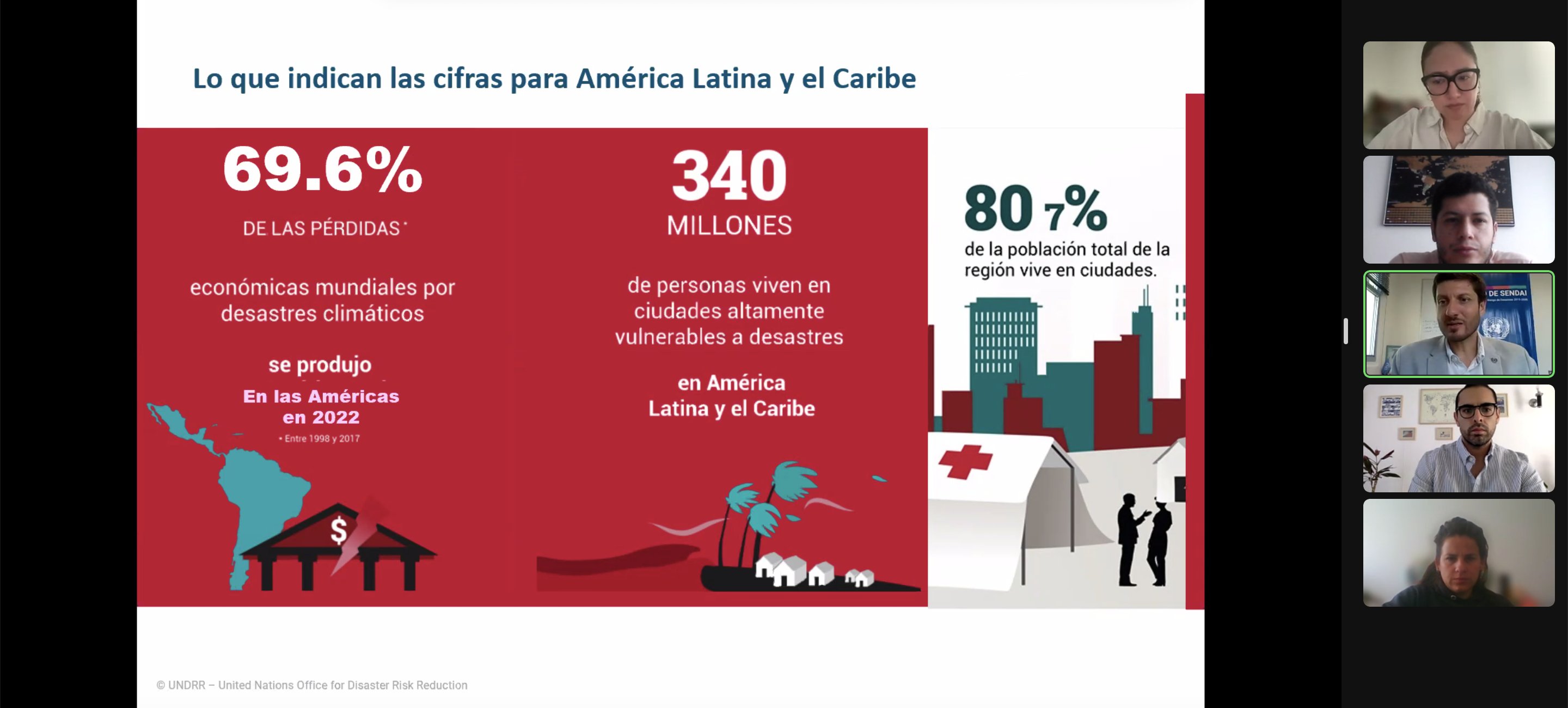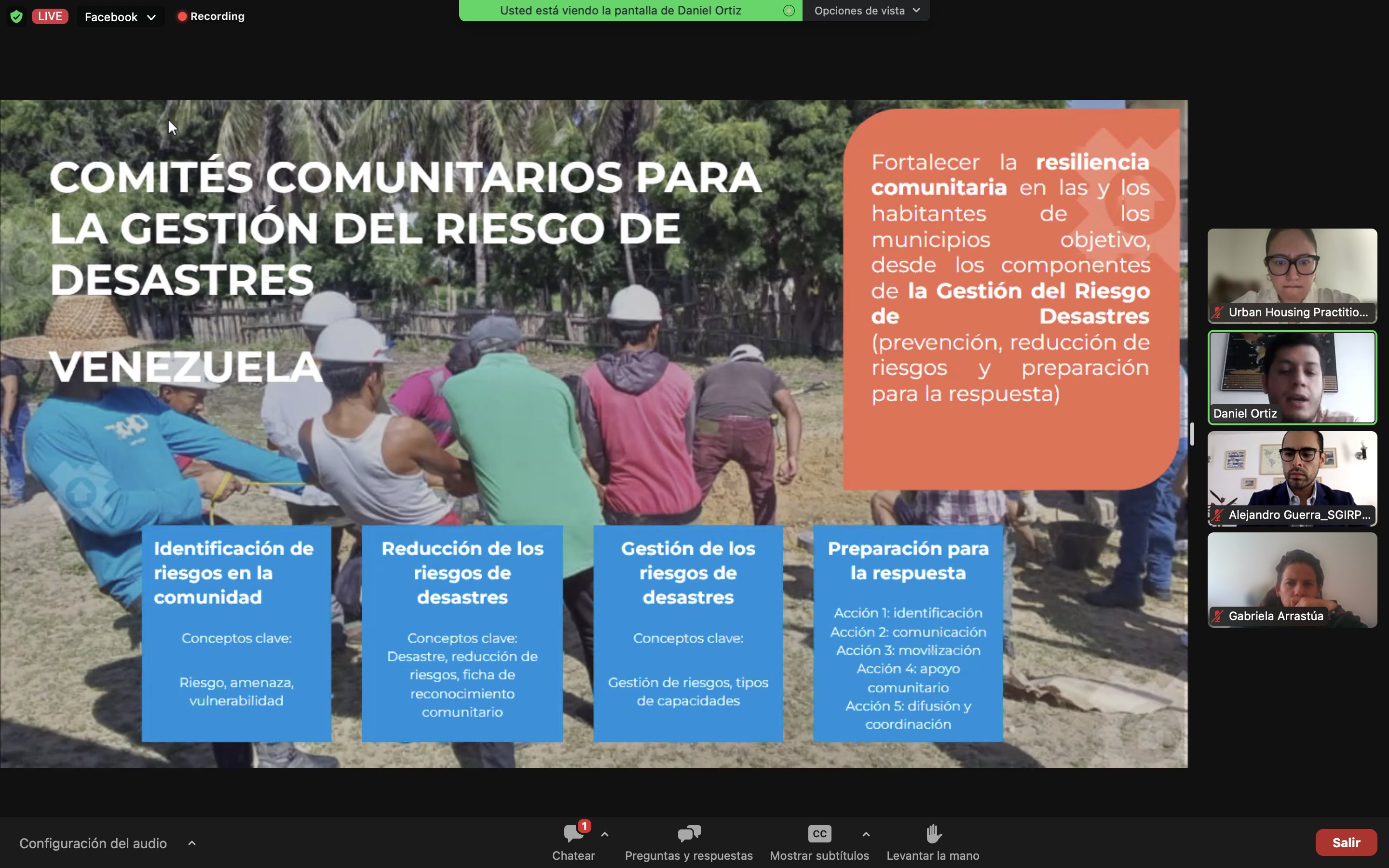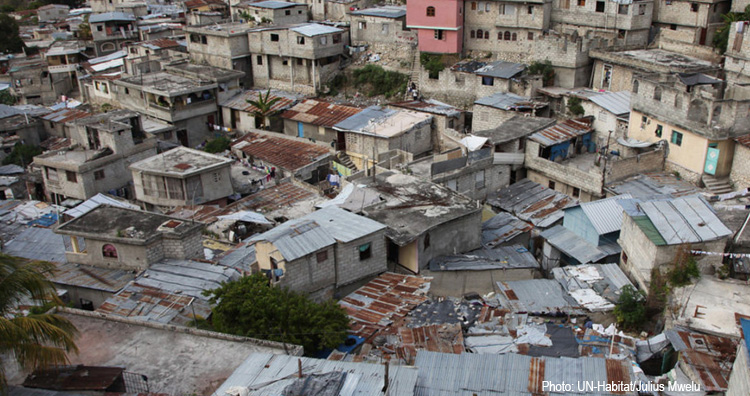Within the framework of the housing laboratory "Disaster Risk Prevention in Informal Settlements," stakeholders from the public sector, social organizations, multilateral entities, and academia gathered on June 14 to discuss the challenges of disaster risk prevention in housing in Latin America. The webinar was sponsored by the UHPH platform. This topic is of growing importance, considering that the region is frequently affected by extreme weather events such as earthquakes, hurricanes, floods, and landslides. These disasters have a significant impact on communities, especially in informal settlements, where there is a higher vulnerability and likelihood of housing damage.

Gabriela Arrastúa, General Operations Director of Techo for Latin America, delivered the webinar introduction, highlighting the importance of risk prevention in housing in the region. She emphasized the need for comprehensive work involving various societal actors and taking measures to minimize risks through appropriate solutions, effective monitoring, and control.
Nahuel Arenas, Deputy Head of the United Nations Office for Disaster Risk Reduction for the Americas and the Caribbean (UNDRR), shared UNDRR's perspective on disaster risk prevention in housing. He highlighted that the region experiences the highest economic losses worldwide due to climate-related disasters, and 340 million people live in highly vulnerable cities. Arenas mentioned the [Principles for Resilient Infrastructure] document, which provides guidelines for decision-making in infrastructure investment, including housing, promoting a holistic approach and the integration of different actors.

Daniel Ortiz, Social Areas Coordinator at Techo for Latin America and the Caribbean, shared Techo's experience in disaster risk prevention. Techo's approach focuses on community development, social awareness and action, and advocacy for public policies. Their work model consists of four steps: identification, diagnosis, action, and evaluation. In Venezuela, Techo established internal community committees composed of settlement residents to discuss how to prevent risks. Through training and education strategies, they addressed risks and community vulnerabilities related to climate change. Actions were taken to identify, reduce, and manage risks and prepare for response. Results included community training to understand disaster risks and the promotion of self-managed anticipatory actions. In the case of Colombia, Techo focused on the comprehensive improvement of homes prone to wind damage, as well as the utilization of community infrastructures, such as a church converted into a hurricane shelter. They conducted a diagnosis of homes exposed to strong winds, provided training in safe construction techniques, and supplied materials and support to enhance housing roofs.

Andrés Cruz, Habitat for Humanity Specialist, shared the organization's experience in disaster management in the Caribbean. The region regularly faces disasters, especially hurricanes, which are becoming more frequent and less predictable. Habitat for Humanity focuses on understanding disaster risk, strengthening risk governance, investing in risk reduction, and increasing disaster preparedness. The four priorities of the Sendai Framework for Disaster Risk Management in Latin America and the Caribbean are:
- Local capacity strengthening: The organization implements the Participatory Approach for Safe Shelter Awareness (PASSA) to raise awareness about safe accommodations. This includes disaster risk management, sustainable construction systems, water management, sanitation, solid waste management, energy consumption, and stakeholder training.
- Infrastructure improvement: Solutions are implemented to build resilience and reduce the effects of climate change. This includes structural improvement of a room within the house to convert it into a safe place during emergencies (a safe room), as well as the installation of detachable solar panels and rainwater collection systems with detachable purification systems.
- Community awareness: Emphasis is placed on the importance of investing in risk prevention and mitigation, as every dollar invested in these areas can save eight dollars in disaster response.
- Enhanced disaster response: Despite prevention and mitigation efforts, communities can still be affected by disasters. The organization has been developing a community tool that allows coordination among donors, partners, and operators to respond to disasters.
Myriam Urzúa, Secretary of Comprehensive Risk Management and Civil Protection (SGIRPC) of the Government of Mexico City, shared the SGIRPC administration's experience in risk management in Mexico City. Focusing on prevention rather than reaction, SGIRPC seeks to comprehensively address the different stages of the risk management process. Mexico City faces four main issues: risk awareness, governance, investment, and emergency response. Some identified problems include a lack of sufficient information on vulnerability, a disjointed regulatory framework, disproportionate allocation of resources between emergency response and preventive actions, and unacceptable response times. SGIRPC has established several goals to address these issues. Some of these goals include:
- Elaborating the Protocol for the Seismic Emergency Plan (PES) and six other protocols for different threats. The PES aims to coordinate entities involved in emergency response associated with natural phenomena. Micro drills have been conducted with an average participation of 7 million people.
- Designing a public policy for risk prevention and reduction, incorporated in the 2019-2024 Government Program.
- Integrating comprehensive risk management and resilience, bringing risk awareness to all sectors.
- Updating the regulatory framework in terms of Comprehensive Risk Management and Civil Protection, simplifying procedures and requirements.
- Developing and promoting the use of the Risk Atlas as a fundamental instrument for decision-making by authorities. The atlas aims to be dynamic and contain all possible vulnerabilities.
- Implementing an Early Warning System to increase the dissemination of weather alerts and monitoring volcanic activity.
- Promoting compliance with Internal Civil Protection Programs to improve worker safety.
- Creating a network of community brigades through training people in neighborhoods, housing units, and towns.
- Enhancing training in all sectors, with a total of 415,070 trained individuals, including public school staff.
Finally, Adriana Piperno, risk management expert in Uruguay, shared her experience in urban flooding work. In Uruguay, over 150 populated centers are at risk of flooding, with 25 of them considered high-risk. She emphasized the importance of addressing the root causes of risk, such as urbanization processes and informal settlements. Her main recommendations were:
- Integrating actions related to housing with urban actions. A democratic city with a gender rights approach.
- Communities must participate in the foundation and decision-making processes regarding measures that involve them.
- The role of the State is fundamental to sustain risk management processes. Prioritizing vulnerable communities and areas is necessary.
- A systemic construction of the problem is required. - Flooding is one risk within a complex system. It is important to understand the particularities of the analysis system (neighborhood, city, etc.) and its multiple risks (social, environmental, economic).
Disaster risk prevention in informal settlements is a crucial challenge in Latin America. Through collaboration among the public sector, social organizations, multilateral entities, and academia, effective solutions can be developed to minimize risks and protect vulnerable communities. The work of organizations such as Techo, Habitat for Humanity, and the SGIRPC of the Government of Mexico City, as well as the shared expertise of risk management experts, demonstrate the importance of approaching this issue from different perspectives and with comprehensive approaches. By strengthening awareness, training, and risk governance, housing resilience can be improved, ensuring the safety of communities in the region.

